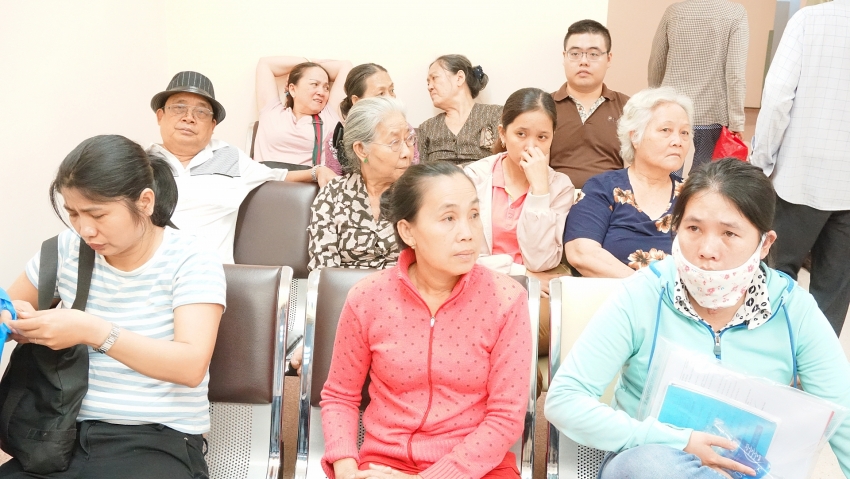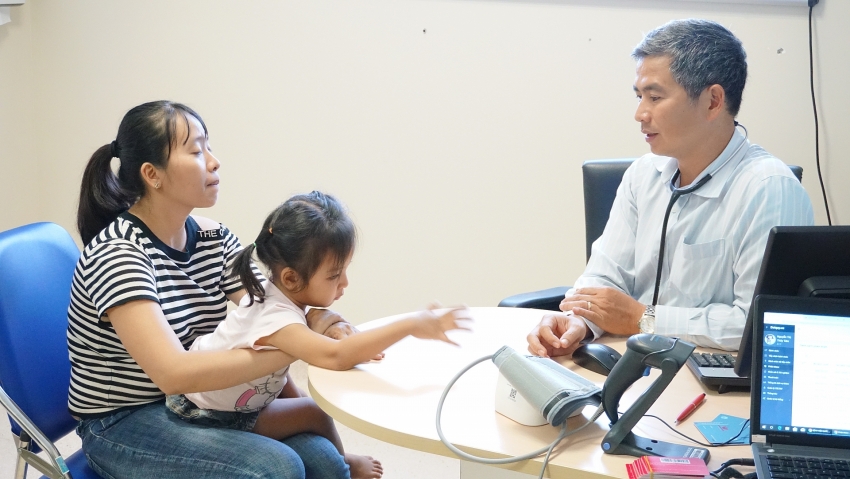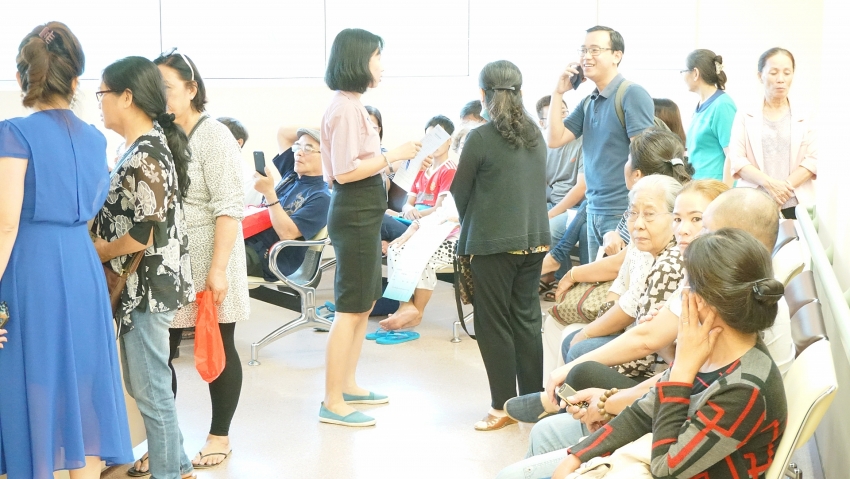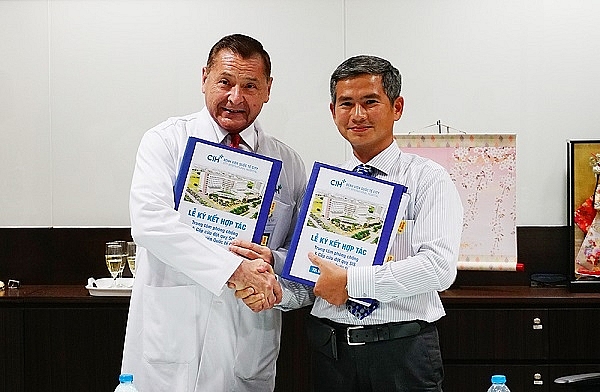City International Hospital launches first holistic stroke centre
 |
| More than 100 patients visited CIH’s Clinic of Stroke care during its first few hours of operation |
Early that morning, more than a hundred patients from different parts of Vietnam have signed up at the clinic for medical examination and treatment. The majority of these patients were diagnosed with onset symptoms of frequent headaches, weakness/numbness of the face, arm, or leg, usually on one side of the body; trouble talking or understanding speech; episodes of unexplained dizziness or unsteadiness.
Patient N.L.T. (62, Mekong Delta), while waiting for the examination, shared that she used to have sudden severe headaches and sudden weakness/numbness of her body but the symptoms lasted only for a few seconds.
Tran Chi Cuong, director of Stroke Centre at CIH, who is also the president of the Ho Chi Minh Society of Vascular and Interventional Neurology, said “There are an estimated 200,000 incidents of stroke in Vietnam per annum, leading to over 100,000 deaths. Almost half of the stroke deaths occur in the out-of-hospital environment. Every minute of delay to treatment is said to cost a patient 1.9 million brain cells. When a clot blocks your artery at the start of a stroke, the damage is swift. These advances in acute stroke therapy underlie the concept that ‘time is brain’ and that urgent intervention can limit cerebral damage and increase the chances of survival for ‘golden hour’ patients arriving within 4 or 5 hours.”
 |
| Professional consultation withTran Chi Cuong |
“The risk of stroke is increased, but there is no single cause. With the increase in the older population around the globe comes an increase in the incidence and prevalence of chronic conditions, contributing to an increase in the reported prevalence of diabetes, hypertension, obesity, and cholesterol. Excessive smoking and/or heavy drinking, chronic stress or being exposed to pollution and toxic chemicals – these all contribute to the high rise of stroke,”Cuong added.
 |
| Regular stroke screening is highly recommended to detect blockages and to find out your stroke risk number |
According to Cuong, “The effective treatment of stroke can prevent long-term disability and save lives. Treatment usually involves taking one or more different medications, although some people may also need surgery. The specific treatments recommended depend on what the stroke was caused by. For example, for a blood clot obstructing the flow of blood to the brain (ischemic stroke), the recommended medication is what they call a "clot buster," which is the gold standard for treating ischemic stroke. In case of severe stroke with blood in the brain or a brain aneurysm, surgical intervention with the application of colour-coded quantitative digital subtraction angiography (DSA) maximises procedure outcomes.”
City International Hospital’s Stroke Care Centre has responded to the challenge of rising strke with a multidisciplinary team of stroke experts, which includes vascular and neuro-interventional physicians, nurses, and other healthcare professionals who provide 24-hour rapid response.
The comprehensive stroke care extends beyond hospitalisation. It provides stroke prevention, extended rehabilitation, and lifelong follow-up care in the stroke centre. It also participates in reducing hospital overload, while at the same time focusing on acute stroke treatment, prevention, and recovery.
John Lucas, CEO of City International Hospital, insisted: “Stroke Centre SIS-CIH is our first Joint Management Programme to develop our Medical Centres of Excellence. In 2019, we will collaborate with other specialised practices to launch an Orthopedic Center, Plastic & Wellness Clinic, and a full-fledged Cancer Centre. City International Hospital is planned to be a tertiary hospital in the west of Ho Chi Minh City, Mekong Delta, and Cambodia through such Joint Clinical Management Partnerships.”
 |
| A handshake that makes a difference in community healthcare between John Lucas, CEO of City International Hospital, andTran Chi Cuong, founder of SIS |
Calling 1-1-5 at the first symptom of stroke can help you get to the hospital in time for lifesaving stroke care.
What the stars mean:
★ Poor ★ ★ Promising ★★★ Good ★★★★ Very good ★★★★★ Exceptional
 Tag:
Tag:
Related Contents
Latest News
More News
- Cake by VPBank posts strong gains in scale and efficiency leveraging AI focus (January 05, 2026 | 18:55)
- Vietnam's retail market tops $269 billion in 2025 amid e-commerce boom (December 31, 2025 | 19:00)
- Global alliance develops $1 billion AI data centre network in Vietnam (December 30, 2025 | 10:08)
- Businesses ramp up production as year-end orders surge (December 30, 2025 | 10:05)
- Vietnam’s GDP forecast to grow by 9 per cent in 2026 (December 29, 2025 | 08:29)
- Vietnam's top 500 value-creating enterprises announced (December 27, 2025 | 08:00)
- Three-way partnership unveiled to ease financing at Hong Hac City (December 24, 2025 | 14:13)
- PM orders investment model for North–South high-speed rail (December 22, 2025 | 17:43)
- First members of Danang International Finance Centre revealed (December 22, 2025 | 17:39)
- Securing capital and efficiency for Vietnam’s 2026-2030 growth ambitions (December 17, 2025 | 10:00)
























 Mobile Version
Mobile Version